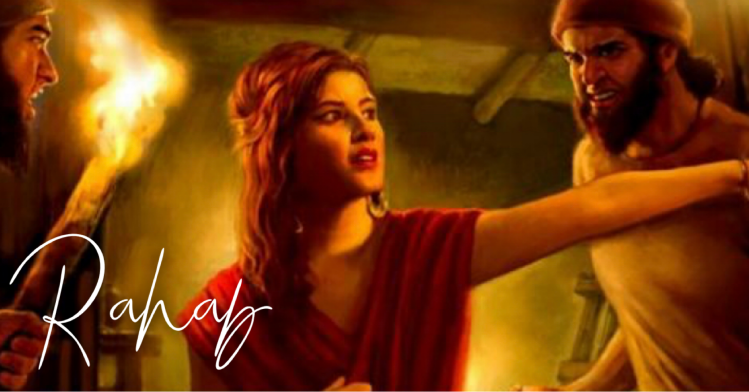Read Matthew 1:1-17.
Matthew begins his book with the genealogy of Jesus. The author is proving that Jesus is of the lineage of both Abraham and David. Connecting Jesus to Abraham proves He fulfills the Old Testament Jewish writings. Matthew 1 links David to Jesus to prove that He is a King–again fulfilling what had previously been prophesied about the coming Messiah.
The pattern of ____ was the father of ____ is how Matthew organized the names in the list. Yet sprinkled throughout the genealogy are the names of five women: Tamar, Rahab, Ruth, Bathsheba, and Mary. The backgrounds of these women reveal a theme that God was well-aware of when the author of Matthew inventoried the lineage of Jesus to introduce the book.
Tamar’s heart-wrenching story is found in Genesis 38. She was the unfortunate–yet sharp-witted–widow of two evil sons of Judah. God killed both of her husbands, because of their wickedness. With no heirs, she was destined to wait for Judah’s last son to become of marriageable age. But Judah never followed through on this agreement. Thus Tamar takes matters into her own hands by pretending to be a prostitute to sleep with her father-in-law to produce the necessary heirs of the promise. She cleverly reveals her identity to Judah and is blessed with not just one son but two when she delivers twins. God blessed Tamar despite the cultural abuse of women. She took back her authority.
Rahab was a prostitute living in the enemy city of Jericho. Joshua 2 explains that Rahab hides the Israelite spies on the roof of her home, because she believes God had given the Israelites the land and was on their side. Scripture notes that Rahab believed God was supreme over all the other gods that her society worshipped, and she chooses to lie to her government to protect the men so that they can escape. When the walls of Jericho come tumbling down in chapter 6, Rahab and her family are guaranteed safety and become members of the Israelite community who possess the land promised by God.
Ruth is the only one of the five with her own book. She was a Moabite widow who made the choice not to go back to her home and false gods when life seemed hopeless. Instead Ruth trusts the sovereignty of God and follows her mother-in-law, Naomi, back to Bethlehem to relocate. God has favor on Ruth and arranges an Israelite man named Boaz (Rahab’s son) to take notice of her. Boaz acts as kinsman redeemer to Ruth by marrying her, and together they produce the heir who will become the grandfather of Israel’s King David.
Bathsheba is called the “wife of Uriah” in Matthew’s genealogy. 2 Samuel 11 explains how she was taken advantage of by King David when he should have been off at war like her husband was. After committing adultery with her, David tries to cover up his sin by killing off Uriah and marrying Bathsheba, but God won’t let him get away with it. Could Bathsheba have been a compliant participant in the affair with David? She suffers the consequence of their sin alongside David of losing her eight-day-old baby boy. Amazingly, God forgives their rebellion and restores their marriage, because of David’s repentant heart. Their second son, Solomon, carries on the royal lineage that will eventually bring about Jesus.
Mary is a girl from a poor family living in the village of Nazareth. Luke 1 tells how she is visited by an angel who delivers the news that she has found favor with God and will be the mother of the long-awaited Messiah. Mary’s response after her dialog with Gabriel is pure elation as she sings with joy over being used by God in His bigger story. Even though she’s engaged to Joseph and society would not understand her getting pregnant outside of wedlock, Mary chooses to rejoice in spite of the impending shame she will endure.
All of these women have shame in common with them. Tamar was shamed by both of her husbands and her father-in-law. Rahab was shamed by her community as evidenced in her line of work. Ruth’s shame was in her plight as a barren widow in a foreign land–dependent on male-run society to take care of her. Bathsheba was shamed by her own king. Mary’s shame was in the fact that few-to-none would believe and support why she was pregnant and unmarried.
God honors these women as chosen members of His lineage. Shamed and misunderstood by society, Tamar, Rahab, Ruth, Bathsheba, and Mary remind us that God loves the misfortunate and has a plan for them. God honors these five women and intentionally includes their names alongside of the men in Matthew 1 to prove that Jesus is both Messiah and King. God uses the placement of these five names in the list to shine light on the message of restoration. He restores each of these women to their rightful place–that only the big picture of the unseen realm could explain.
There’s no accident that God included these women in His genealogy. These women were chosen. On purpose. Women are just as important to God. Even though there are fewer biblical accounts of females in the bible, and church history has suppressed women due to man’s ego through cultural norms and religious patriarchy, God has not forgotten women. God knows each of our stories. He knows the trauma and abuse we’ve experienced. He knows the shame that men in our lives have put on us. He knows the direct or indirect shame we’ve suffered in our male-dominated world.
Personal Reflection:
1. How do we know that Tamar’s actions and heart intentions honored God? See Genesis 38.
2. Why do you think Tamar and Rahab both ask for a “guarantee” in their stories? See Genesis 38; Joshua 2; 6:17.
3. How does the book of Ruth end? See Ruth 4:13-17.
4. Why does God restore David and Bathsheba’s marriage? See 2 Samuel 11; 12:15-24.
5. What stands out to you about Mary’s song in Luke 1:46-55?
BONUS: How have you seen God’s activity in your life this week? How has He provided, answered, comforted, restored, guided, etc.?





